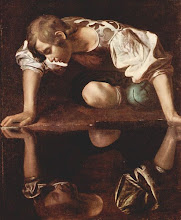_running.jpg) To summarise the story of Callisto: Callisto was a companion of the virgin huntress, Diana. Jupiter saw her, and disguising himself as Diana, approached her. When he attempted to seduce her, she refused, and he raped her. She got pregnant but managed to conceal her pregnancy from Diana until the goddess decided to go swimming with her companions. Diana sent her away, and after Callisto had the baby, the jealous Juno turned her into a bear. Fifteen years later the child, a son called Arcas, was hunting when he came across a bear. Not realising it was his mother, he was about to stab the bear with her javelin when Jupiter prevented this matricide by turning them both into constellations, Ursa Major and Ursa Minor. Still jealous, Juno asked her foster parents Oceanus and Tethys to refuse Callisto and Arcas permission to go down into the sea, and so the constellations always remain above the horizon. (photo of bear by Malene Thyssen used under GNU Free Documentation Licence)
To summarise the story of Callisto: Callisto was a companion of the virgin huntress, Diana. Jupiter saw her, and disguising himself as Diana, approached her. When he attempted to seduce her, she refused, and he raped her. She got pregnant but managed to conceal her pregnancy from Diana until the goddess decided to go swimming with her companions. Diana sent her away, and after Callisto had the baby, the jealous Juno turned her into a bear. Fifteen years later the child, a son called Arcas, was hunting when he came across a bear. Not realising it was his mother, he was about to stab the bear with her javelin when Jupiter prevented this matricide by turning them both into constellations, Ursa Major and Ursa Minor. Still jealous, Juno asked her foster parents Oceanus and Tethys to refuse Callisto and Arcas permission to go down into the sea, and so the constellations always remain above the horizon. (photo of bear by Malene Thyssen used under GNU Free Documentation Licence)Ovid's telling of the story in A. S. Kline's translation.
 Artists seem to have focussed on two particular moments in the story of Callisto: Jupiter's attempted seduction in the form of Diana and the exposure of Callisto's pregnancy, and I'll be showing you some of those in future posts. But for now, here is Nicolaes Berchem's 1656 painting, Jupiter Notices Callisto (now in a private collection). (public domain image from Museum Syndicate)
Artists seem to have focussed on two particular moments in the story of Callisto: Jupiter's attempted seduction in the form of Diana and the exposure of Callisto's pregnancy, and I'll be showing you some of those in future posts. But for now, here is Nicolaes Berchem's 1656 painting, Jupiter Notices Callisto (now in a private collection). (public domain image from Museum Syndicate) The story inspired a 1651 opera "La Calisto" by Francesco Cavalli. The DVD shown is reviewed by Opera Today. YouTube has extracts, of course, and the one I've chosen shows Callisto's transformation into a bear.
The story inspired a 1651 opera "La Calisto" by Francesco Cavalli. The DVD shown is reviewed by Opera Today. YouTube has extracts, of course, and the one I've chosen shows Callisto's transformation into a bear.Those in the right location might be interested to know that The Royal Opera House in London and The Portland Opera in Oregon will be performing this opera in their 2008/2009 seasons.





No comments:
Post a Comment